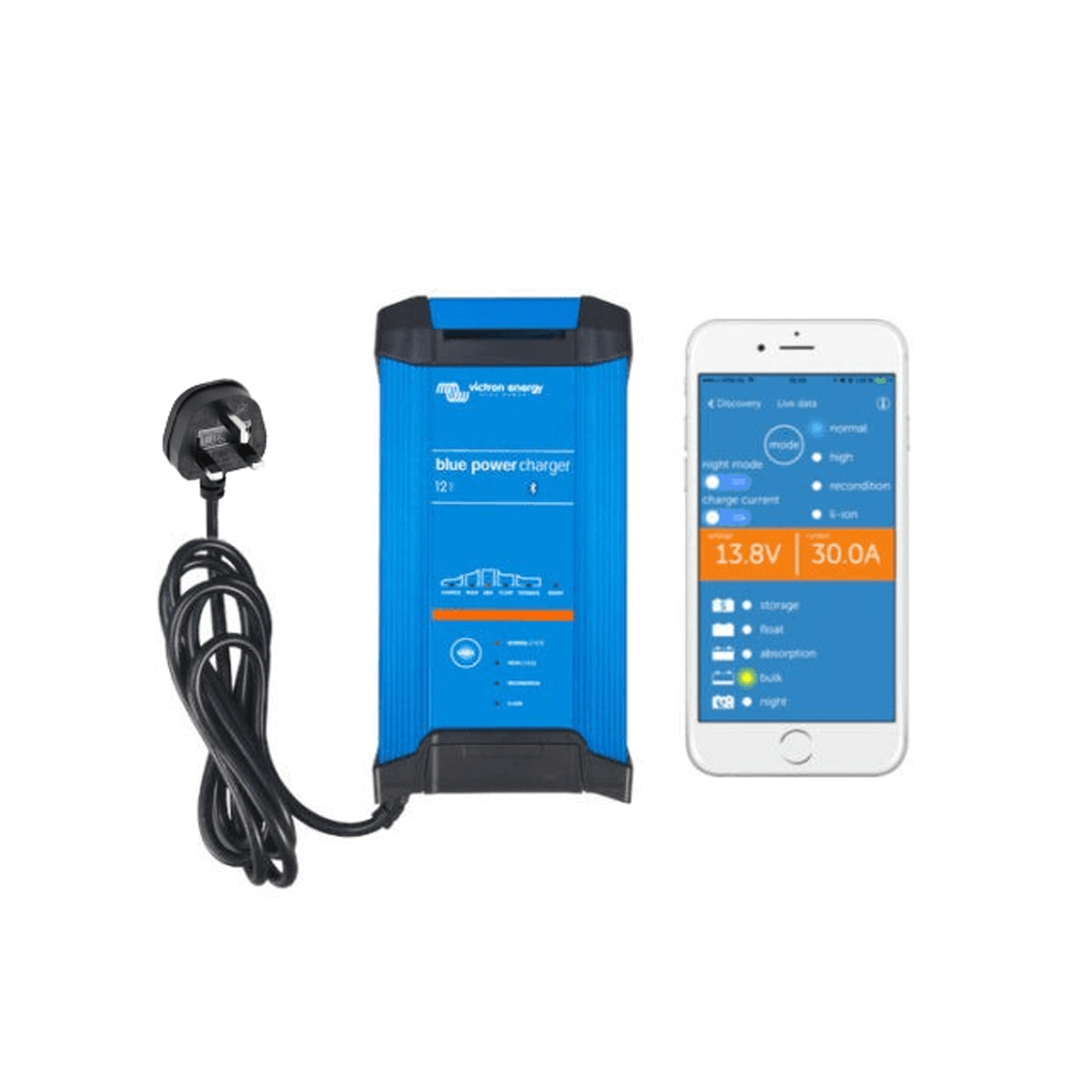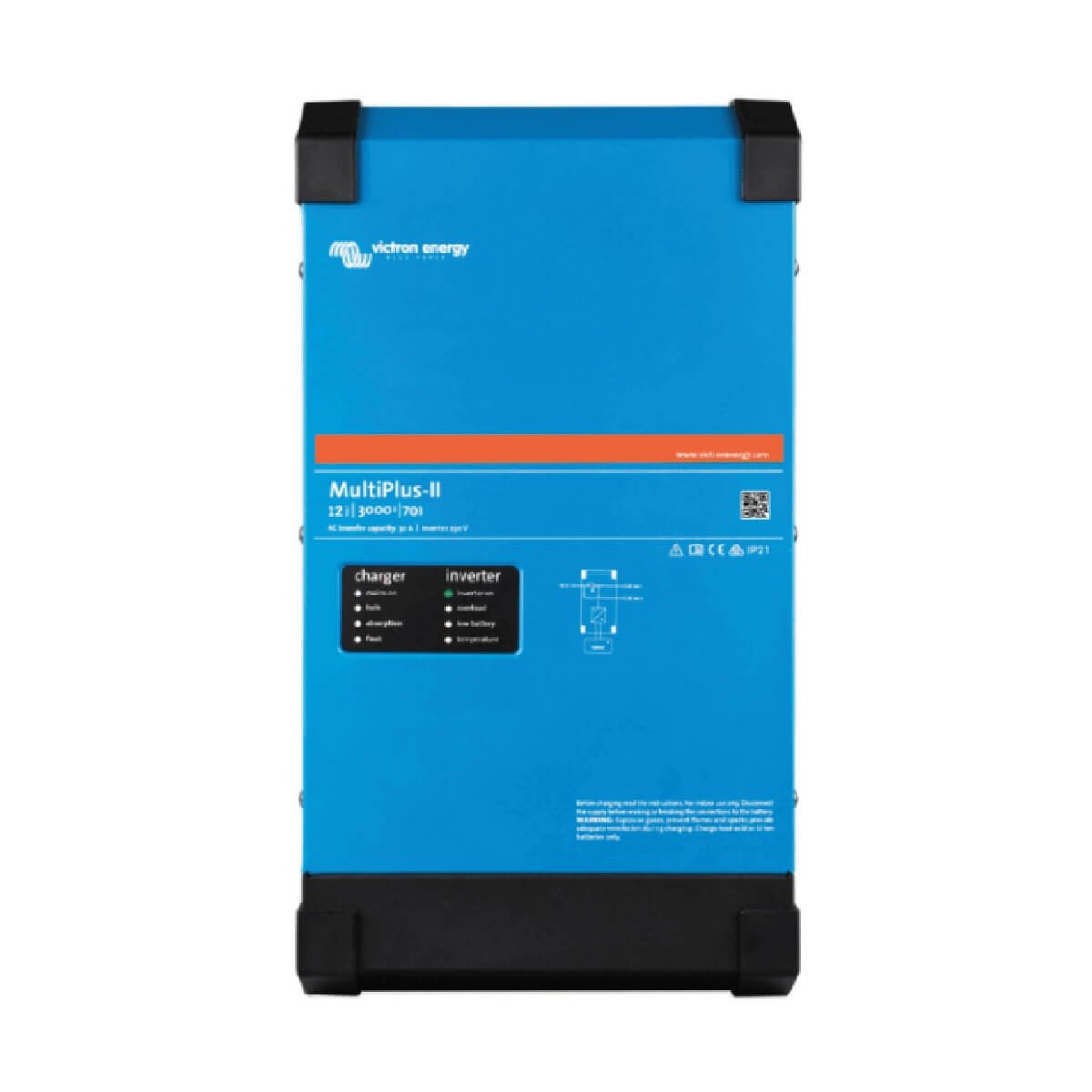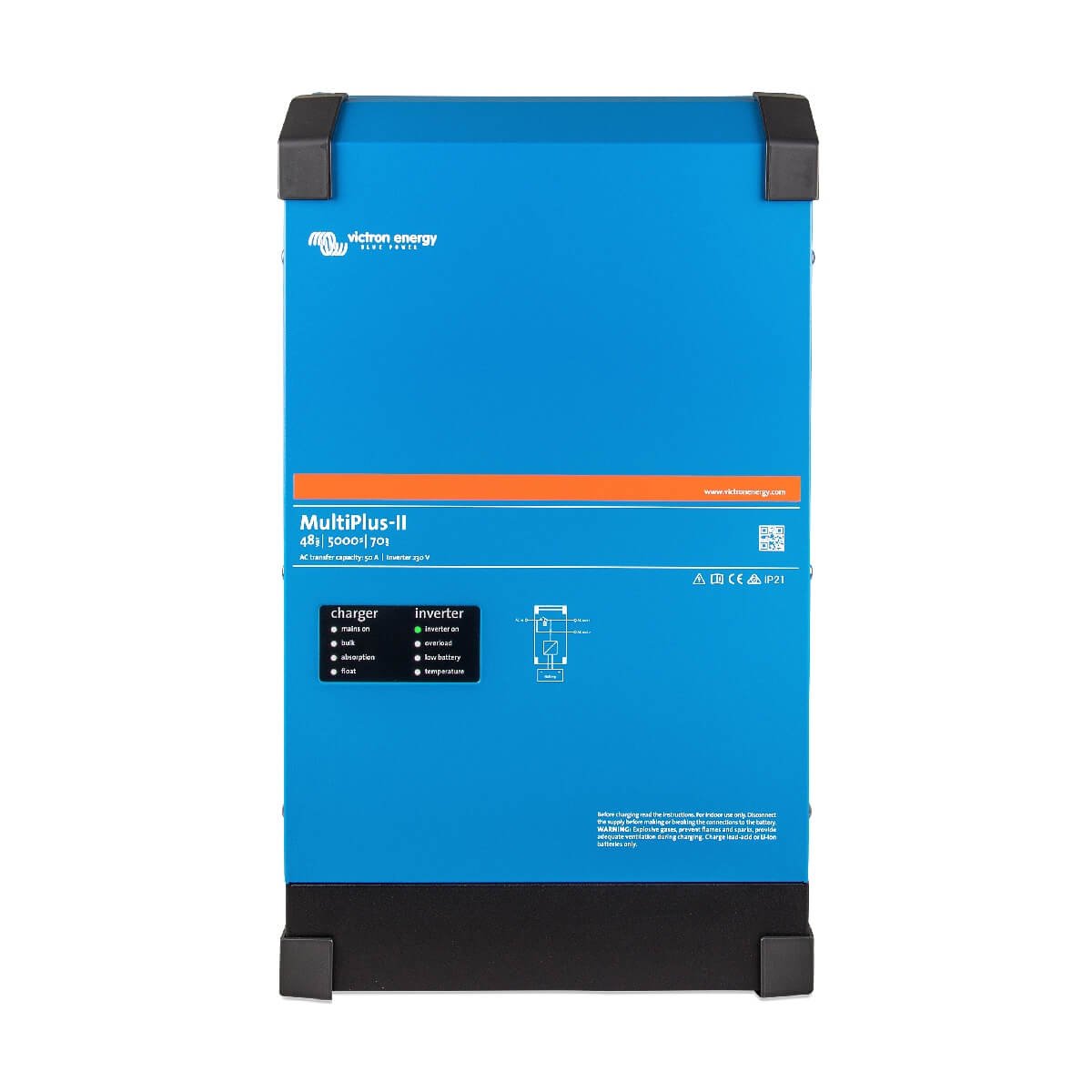Electric hook up
What is electric hook up?
Electric hook up connects a campervan to 230V mains power (sometimes called shore power) whenever you’re at a campsite or parked up at home. This can charge your leisure battery and power 230V appliances from mains plug sockets, just like you would at home. Unlike caravans which tend to rely solely on shore power, most campervans use a combination of 12V and 230V power. The 12V power from a leisure battery can be used to power essential components so the camper can still be used off-grid, like the lights, the fridge and the water pump, and the 230V can either work only when you’re plugged into hook up, or when you’re off-grid if you have a campervan inverter.
Campervan electric hook up consists of a long extension cable, a waterproof socket, and a consumer unit which must be used to distribute the power safely.
What does a consumer unit do?
A consumer unit safely distributes 230V power. It uses residual current devices (RCDs) and miniature circuit breakers (MCBs) as safety mechanisms. RCDs and MCBs work a bit like a fuse, but they can be reset if they are triggered.
MCBs are designed to break the flow of current if a short circuit, high current or overload is detected. RCDs are switches designed to reduce the risk of electrocution. If current travels away from the circuit into something else, such as a person, an imbalance occurs between the live and neutral wires. RCDs detect this imbalance and stop the flow of current to avoid prolonged electrocution.
The incoming 230V must pass through a consumer unit before powering a battery charger or inverter/charger. Similarly, any 230V power coming from an inverter should be passed through a consumer unit before it is distributed to the plug sockets.
230V power is much more dangerous than 12V power, especially if there is also a high current flow! If in doubt, make sure to have your system designed and checked by a professional.
Using electric hook up to charge a leisure battery
Battery chargers can be used to charge a campervan’s leisure batteries from 230V shore power. They convert the high voltage power into the correct voltage required to charge the 12V (or sometimes 24V) leisure batteries.
Chargers with a higher current rating will provide a faster rate of charge. However, it’s important to choose a current rating which is suited to the battery’s size and type. For most battery types, manufacturers recommend a maximum charging current of 0.2C (20% of the battery’s Ah capacity). For example, a 200Ah battery should be charged with a current no more than 40A.
Lithium leisure batteries can handle higher charging currents, sometimes up to 0.5C, although continual faster charging will reduce the battery’s lifespan. You can find these recommended charge rates in the battery’s data sheet.
A Victron battery charger (left & middle) and a MultiPlus 2-in-1 inverter/charger (right)
A Victron battery charger (top & middle) and a MultiPlus 2-in-1 inverter/charger (bottom)
Recharge time from electric hook up using an inverter/charger
Model
Recharge current
20A
35A
50A
70A
80A
120A
Hours to recharge a 300Ah leisure battery* via electric hook up
*hours to recharge a 300Ah leisure battery from 10% to 100% (270Ah of usable capacity) via electric hook up
| Model | Recharge current | Hours to recharge a 300Ah leisure battery* via electric hook up |
|---|---|---|
| 12/500/20 MultiPlus | 20A | 13.5hrs |
| 12/800/35 MultiPlus | 35A | 7.7hrs |
| 12/1200/50 MultiPlus | 50A | 5.4hrs |
| 12/1600/70 MultiPlus | 70A | 3.9hrs |
| 12/2000/80 MultiPlus | 80A | 3.4hrs |
| 12/3000/120 MultiPlus-II | 120A | 2.3hrs |
Recharge time from electric hook up using a battery charger
Recharge current
15A
20A
30A
Hours to recharge a 300Ah leisure battery* via electric hook up
*hours to recharge a 300Ah leisure battery from 10% to 100% (270Ah of usable capacity) via electric hook up
| Model | Recharge current | Hours to recharge a 300Ah leisure battery* via electric hook up |
|---|---|---|
| 15A battery charger | 15A | 18hrs |
| 20A battery charger | 20A | 13.5hrs |
| 30A battery charger | 30A | 9hrs |
Campervan electrics leaving you confused?

Battery chargers
Victron battery chargers use a seven-step charging algorithm to achieve an ideal charging profile based on the type of battery you want to charge. You can also monitor and configure the charger and your batteries using the VictronConnect app.
The most popular model is the indoor battery charger, which comes in 15A, 20A and 30A. It can be installed permanently in your campervan and used to charge leisure batteries with 230V power. You can also wire in mains plug sockets which you can use to power 230V appliances whenever you’re plugged into electric hook up.
The other battery charger model available has an ingress protection rating of IP65, which means it can be used outdoors. This model has been specifically designed for recovering deeply discharged batteries or trickle charging batteries over long periods of inactivity. It may be a good option for use in a workshop, or to charge motorbikes or boat’s leisure batteries, but it isn’t the right choice for regularly charging your leisure battery from shore power.
MultiPlus inverter/chargers
If you still want to use your 230V appliances when you’re off-grid, you’ll need an inverter to convert the 12V power from your leisure batteries into 230V power. To save space, money and installation time, you can buy one device which works as both an inverter and a battery charger.
When you’re plugged into shore power, a combined inverter/charger such as the Victron MultiPlus will charge the leisure battery and provide 230V power directly to your campervan’s plug sockets. When you disconnect the electric hook up, it will automatically switch to use the leisure battery as the source of power, converting the voltage from 12V to 230V.
When you’re not connected to shore power, the number of watts you can access will be limited by the size of the inverter. Have a read of this article to find out how many watts you might need and how to size a campervan inverter.
We are sometimes asked if it’s possible to use a separate inverter and battery charger. This is possible, but once all of the associated components are factored in (inverter, battery charger, 3 way switch and associated cables), its normally more expensive than using the purpose built inverter/charger, and also more confusing to install.
Charlie & Dale, Co-founders
Victron MultiPlus inverter/chargers
Ready-to-go inverter/charger kits Designed by experts 🔧
Our kits are designed by engineers to be safe and robust. Plus – when you purchase, we’ll send you a free wiring diagram and installation guide.
Shop nowWho should install campervan electric hook up? 🤔
 You’re spending most of your time on campsites
You’re spending most of your time on campsites
If you’re planning to stay on campsites often, electric hook up is a must have. If you choose to rely mainly on shore power, you can save money on your electrical system, as you won’t need as large a battery bank or a high wattage inverter.
Additionally, if you will visit a campsite every other day, you won’t need to rely on solar and a battery to battery charger to recharge. You can simply plug in each time you reach a campsite, and fully recharge from hook up.
However, it’s important to remember that campsite hook up posts have a rated current draw of either 10A or 16A. This is equivalent to 2300W or 3680W. If you use multiple high wattage appliances, or even one really high wattage appliance, you could trip the campsite post (i.e. trip the fuse inside the hook up) and likely get charged by the campsite to turn it back on. You can check the label on your 230V appliances to see how much power they will draw.
 You’re spending most of your time off-grid
You’re spending most of your time off-grid
If you’ve designed your electrical system so that you can survive completely off-grid, relying on solar panels and charging via your alternator, then you don’t necessarily need electric hook up for your campervan.
However, if you will spend some time on campsites, it’s probably worth that little bit of extra effort to install. As well as using campsites as a fall-back plan, it also means you can charge your leisure batteries when you’re parked up at home. So, you can keep them topped up and give them a full charge before you head off on a trip.
If you have an inverter, you may feel like you don’t need hook up, since you will always have access to 230V power. But remember – if you want to use high power appliances, you will need a big inverter, which is heavy and expensive. For example, if you want to use a 1400W hairdryer, you will need a 1600W inverter which costs £660 and weighs 12kg.
A really good compromise is to install a smaller inverter and shore hook up, and only use those high wattage appliances when you’re plugged into shore power.
What components do you need to install electric hook up?
To bring mains power into your campervan, you’ll need a long electric hook up cable with the caravan-style, weather-proof, 2p+E plug, and a waterproof power inlet which will be mounted in the wall of your van.
To install the power inlet, choose a sensible position on the inside of your van (not below any water pipes!) and make sure this matches up to a good position on the outer skin of your van where there are no grooves in the metal work. Once you’ve cut a hole for the socket to fit through, it can be screwed and sealed into place. A two core (2p) + earth (E) cable can be run from the power inlet to the consumer unit, which will then distribute the power to your 230V plug sockets and your battery charger.
If you’re converting a van from scratch, make sure to do all the jobs which involve cutting through the outer skin of the van first! This means you don’t have to dig through layers of cladding or insulation to find the best spot. Once you’ve fitted all the exterior bits, you can do a thorough waterproofing check with the garden hose before moving on to the next stage of conversion.
Shore power inlets
Hook-up cables
If you are purchasing a Victron shore inlet, you need to purchase a Victron power cord. The Victron power cords are only compatible with the Victron inlets, and the non-branded inlets are only compatible with the non-branded cables.
230V hook up wiring diagram for the Victron MultiPlus inverter/charger
On the back of the shore power inlet, connect the Live, Neutral and Earth wires of your two core + earth cable to the correct screw terminals which will be labelled L, N and E. Run this cable to your consumer unit and wire it to match the diagram provided. Typically 2.5mm2 two core + earth cable is appropriate for this application.
You should then follow the wiring as per the diagram to connect your MultiPlus inverter/charger to the two consumer units. Any non-inverter loads (i.e. appliances or plug sockets that should only work when connected to hook up) can be connected to the first consumer unit.
Check out our article about consumer units for more guidance on wiring as well as MCB / RCD selection.
Wire the cable into your power inlet socket before screwing or sealing it into place. It’s much easier to do when you can move it around to get the right angle.
Read our electric hook up articles 🔌
Need help with the rest of your electrical system?
Our electrical system guidebook pages cover everything you need to know about your campervan electrical system ⚡



















